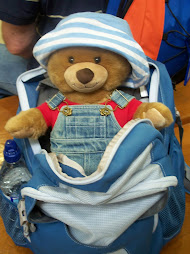
Ms. Edwards and I purchased two audio tour and guidebooks of the field. One was created by TravelBrains and was extremely helpful as we traveled around the battlefield. The audio guide gave some great information. The other tour was created by Eastern National. Each tour took you to different locations with a few in common. The TravelBrain audio tour has a disk that will go into an IBM computer. Ms. Edwards and I decided to follow the Eastern National tour.
The Second Battle of Manassas: August 28 - August 30, 1862
Federal Troops (Army of the Potomac)
- Commander - Major General John Pope
- Corps Leaders - Major General Franz Sigel (I Corps), Major General Nathaniel P. Banks (II Corps), Major General Irvin McDowell (III Corps), Major General Fitz John Poter (V Corps)
- Troops = 77,000
- Cannon = 222
Confederate Troops (Army of Northern Virginia
- Commander - General Robert E. Lee
- Left Wing - Major General Andrew Jackson
- Right Wing - Major General James Longstreet
- Calvary - Major General J.E.B. Stuart
- Troops = 55,000
- Cannon = 178
Stop One of the tour was Brawner's Farm. The path the the farm was blocked off. Ms. Edwards decided to take my picture at one of the fence post.
Evens that happened at this location:
- Stonewall Brigade under Baylor (800 men) vs. Gibbons Brigade (1,800 men)
- Brig. Gen. Rufus King should have been commanding his troops. He had a seizure before the battle and each corp leader had to run it's own command.
- Brig. Gen. John Gibbons originally born in Pennsylvania grew up in North Carolina. At the start of the Civil War he decided to stay with the Union army in which he was a captain. His father was a slave holder. Three of his brothers served in the Confederacy. They all survived the war and were reunited after the war.
- "Seeing the elephant" - meant having your first experience in battle.
- The battle last two hours and only ended due to dark.
- There were 1300 casualties at this location alone. (combined)
- One out of every three soldier who was on the field died.



Second Stop: Unfinished Railroad - The way there was really wooded and we passed by a white house that was owned by the Widow Lucinda Dogan. Below you can see a picture of the house
- General Lee was almost killed by a bullet that went past his cheek
- Col. James Cantwell (82nd Ohio Infantry) was killed at this site. His brother, Surgeon Jacob Y. Cantwell had to wait for the battle to end to find his brother's body.
- Brig. Gen. Cuvier Grover ordered his troops to charge using bayonets. It was one of the only bayonets charge of the war.

 Third Stop: Deep Cut
Third Stop: Deep Cut- August 30th
- Pope ordered another attack against Jackson's line.
- Southerners held against General Fitz-John Porter's troops.
Fourth Stop: Groveton (Groveton Confederate Cementary)
- In 1866, the United States Daughters of the Confederacy created this cemetery.
- They had 266 - 500 soldiers bodies buried here after their shallow graves were exposed due to rain.
- Out of the bodies that were re-buried in this cemetery only two were identified.
- There are 13 stone markers representing the 13 Confederate States.
- At this time soldiers did not carry dog tags like our troops do today. Instead soldiers had their own tags made.
- In 1913 the government mandated the use of identification disks. (dog tags)


Stop Five: New York Avenue
- August 30
- Longstreet pushed columns forward and destroyed the Union left flank.
- The 5th and 10th New York Regiments tried to hold out against Longstreet's troops and were slaughtered.
- It only took five minutes for the 5th New York to lose 123 men.
- This was the greatest loss of life in any single infantry regiment in the Civil War.
- The Zouave unit also fought at this site
Stop Six: Chinn Ringe
- Union troops tried to delay Longstreet's counterattack.
- Below is the foundation of Benjamin Chinn's house. The house was known as Hazal Plain.
- There were 62,000 troops who fought for the Union at this battle. 10,000 were killed or wounded.
- There were 50,000 troops who fought for the Confederacy. 1,300 were killed and 7,000 wounded.

One additional stop that I made at Manassas was at the Stone House. The stone house was used in both the First and Second Battles at Manassas as field hospitals for the federal army. Many soldiers mentioned this site in their journals.
I had to make a u-turn in a cemetery in Manassas. Look who I found playing in the water


No comments:
Post a Comment